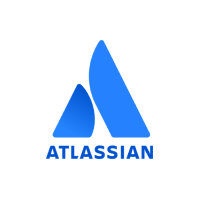Zendesk Pains and Challenges: Why we Decided to Jump Ship for Jira Service Desk
A Day In The Life Of A Product Manager:
As a Product Manager working on an enterprise application, I had giant challenges at different levels of the organization. On one hand, you had to balance the customer’s feature and enhancement requests, then came the technical debt. You also have internal stakeholders who all have a critical stake in the outcomes of your decisions and by the way, you still have to make time to prioritize the backlog and look ahead on where the company should go over the next 9-18 months. In retrospect, I wish I had just taken the blue pill. With each and every new release, the biggest challenge became a balancing act of what features to build, what bugs to fix, what enhancement requests to take and ultimately, what to focus on for the future. Prioritization was a painful but necessary remedy to the overwhelming influx of insanity. While I may be overdramatizing my role as a product manager, nobody ever prepares you to be one. You sort of just find your way and figure out how to swim up for air and tread water fast. Did I mention the body of water is the ocean?
The Customer Love Focus
My daily routine was to always be driven by and focused on “Customer Love.” I intimately looked forward to the cross functional sessions between Development, Support and Product and the primary challenge was to determine what we should work on next. Every product company decides to spend their time on some blend of enhancements, bugs and new features and we were no different. My backlog always had a short term and long term horizon to it and depending on who you were talking to at any given moment, the context could go from strategic to tactical real quick. You had to be nimble and prepared. Preparation was key, and regardless of who you talked to, it was important to understand all of the influx of requests that was coming into the organization.
I liked to call these, the work items:
- New Features: These requirements tended to be new things that needed to be built, meaning, we didn’t have that functionality yet.
- Enhancements: The other type of work that we commonly encountered was an existing feature that needed some TLC in order for the customer to get maximum value.
- Technical Debt: The final type of work item in my weekly conversations were bugs. This was pretty much a piece of functionality that was broken.
There were several thousand of these things floating around at any given time and the biggest challenge was to cut all the noise back and make sense of this story in a way that could be communicated back to development, support and the community. Prioritization using WSJF from the Scaled Agile Framework, was our method of prioritization and it allowed us to stack rank these work items with context so that we could come away with a sequenced roadmap for the coming quarter and beyond. Based on this prioritization and a lot of Development collaboration, we would communicate this out to our community.
The Customer Enablement/Community:
Our community effort was managed through a Zendesk Portal and it was the one stop shop for customers and stakeholders to log tickets, ask questions, and over time become enabled with content and video. Our backlog was in Jira and we relied heavily on an integration between Jira and Zendesk. Many of these tickets were triaged as bugs or planned into a sprint based on 4 aggregated variables of priority. The other critical aspect that was very important to our customers in this portal was release notes. They always wanted to understand what we shipped and what was coming.
The 3 Zendesk Challenges:
With every quarter that passed, we somehow kept grinding out wins and the Product team kept evolving their strategy to one much more focused on solving the larger holistic problems and moving away from any sort of order taking. In order to understand the deeper functional problems, we needed to take advantage of the tagging, labeling and priority abilities across work item types in a way that allowed us to get a good trend on what functional areas of the application were breaking down. Herein lies the problem.
Challenge #1
We only had 4 licenses to Zendesk as it was very expensive so we had to share licenses across our company. Since we were sharing licenses, we weren’t ever able to personalize setup to best fit each of our individual needs to increase efficiency and usability.
Challenge #2
In order to analyze data, use case breakdown, customer validation and prioritization, there were still many manual steps to pull and aggregate data. Ideally we wanted to be able to automatically release notes within predetermined templates from our customer portal to distill issues and findings once the work was complete. The Jira and Zendesk integration was only solving a small part of a bigger problem.
Challenge #3
Reporting on the reality of our work items, status, sprints and workflows was a challenge and Excel was always what I resorted back to once I exported different pieces of data out to understand the true view.
The Solution:
After several debates, we were persuaded by Dev to rethink our challenges considering we already were using Jira so we decided to leverage a more native integration that Jira Service Desk could bring to our external audience. So, we decided to extend our Atlassian Suite of products in order to take advantage of a more native integration and seamless workflow that bridged Confluence, Jira Software and Jira Service Desk. We were relentlessly focused on increasing ways we could affect customer happiness and this allowed us to seamlessly join our many different organizations together under one umbrella. The result of this rollout fostered better collaboration in real time while providing automated ways to boost productivity and output internally and externally.
Better Customer & Stakeholder Happiness:
Simplified Workflow:
Our customers never realized but there was a new simplicity to our workflow. The native integration and application links made our process pick up significant speed. We were able to identify and chop out 3 steps in our workflow that really impacted our ability to move quickly.
Real-time Collaboration:
Real-time notifications on information made it easier to swarm on the most important issues. Jira Service Desk provided a whole new external customer portal experience and also tied into our backlog and workflow effortlessly. This provided an easier way to stage up and crowd source customer ideation, voting, rating and overall gave us a way to put our customer at the front line of the ideas backlog. The customers were able to prioritize and influence the largest value and most common functional problems for us even before it hit the Product Management workflow. An idea could be logged and crowd sourced, thereby automatically getting prioritized by customers before it even turned into a work item in our backlog. Ideation was more organic and centralized and driven by the customers and partners.
Product Management Insight & Awareness:
Product Support and Dev was also able to take advantage of this new workflow. A standardized naming and label convention was put into effect that enabled ways of classifying and labeling work items in a new way that optimized how work items were grouped into holistic functional areas of the product. This helped us as a product organization get better about focusing on what to build as well as ensuring it was the right thing to execute on.
Automated Release Notes & Version Management:
We also fundamentally changed our release process and relied on automation rules and templates in order to completely remove manual intervention in the release notes publishing process. We were able to take advantage of the workflow and statuses of work items in order to cut down on countless hours of manual reconciliation of what we shipped every few weeks. The template auto populated the issues we versioned for the release along with status.
This system has fundamentally changed the way we visualize work items, plan and prioritize our work and version and release it, bringing us closer to the customer. Our process has been truncated and streamlined. The speed at which we now transition and automate work, allows us to stay strategic while relying on the customer to drive more automated ways of shaping the backlog and delivering happiness to the customer.


